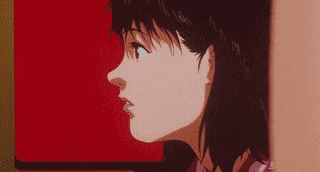Perfect Blue, regia di Satoshi Kon (今敏) e pubblicato nel 1997, è uno dei più agghiaccianti e film anime psicologicamente intriganti. Segue il deterioramento mentale del nostro personaggio principale, Mima Kirigoe, che, dopo aver lasciato il suo gruppo di idoli pop, "CHAM!", diventa l'oggetto del desiderio di una fan sfinita e molto delusa.
Il film è stato lodato per il suo incredibile uso di transizioni che deformano la mente e commenti critici sulle relazioni parasociali assassine. Tuttavia, voglio parlare dell'uso del colore nel film, in particolare del colore rosso. Può sembrare un argomento banale di cui discutere, ma l'uso del colore è incredibilmente importante nel modo in cui i media visivi raccontano la loro storia.
Quali sono gli archetipi di colore?
Un archetipo è un'idea ricorrente che si trova in tutta la narrazione mitologica. Gli archetipi sono progetti di base su cui sono costruite le storie. L'idea di un eroe e di un cattivo è uno degli archetipi più antichi che è stato utilizzato nella narrativa prima ancora che la scrittura fosse inventata.
Anche i colori hanno i loro archetipi ad essi associati, proprio come altri strumenti narrativi. Il rosso, ad esempio, è stato associato alla morte per via della sua connessione con il sangue o per l'idea di essere feroce.
Perfect Blue utilizza il rosso in un modo inaspettato ma unico che aggiunge uno strato di sfumature al film. Se non l'hai notato al tuo primo orologio, non preoccuparti, nemmeno io. Simboli come questi di solito operano a livello inconscio per l'osservatore, ma una volta realizzati, creano un nuovo ritrovato apprezzamento per l'attenzione ai dettagli del regista Kon.
La discesa di Mima
Il rosso viene spesso mostrato insieme a Mima che perde la sanità mentale, specialmente durante le transizioni in cui il confine tra realtà e finzione è sfocato. Dopo aver letto "La stanza di Mima", un sito web che racconta in modo strano la vita quotidiana del personaggio principale, la frase "scusa, chi sei?" si ripete con uno sfondo rosso sorprendentemente intenso.

Questa scena passa rapidamente a Mima sul set di un film, ripetendo quelle parole esatte. Questo dimostra la fragile psiche del personaggio principale e il modo in cui viene spazzata via dal suo fan ossessivo. Perfect Blue ama giocare con le aspettative del pubblico facendo costantemente sembrare la realtà come una finzione e la finzione come la realtà.
Finzione o realtà?
Mima inizia a recitare in un film drammatico poliziesco chiamato "Double Bind" in cui la narrativa immaginaria raccontata rispecchia la sua vita reale. Si arriva al punto in cui spesso è difficile dire se una scena in Perfect Blue sta effettivamente accadendo o se si tratta di una sottotrama all'interno di Double Bind.
Queste scene vengono regolarmente mostrate con il colore rosso presente da qualche parte, il che rafforza il fatto che si sta verificando una fuga dalla realtà. Il film continua a giocare con questa idea facendo sì che lo stress di Mima si manifesti in allucinazioni del suo io passato come cantante idol.
Le illusioni di Mima
Per tutto il film, Mima si confronta con queste illusioni che la tormentano per aver lasciato CHAM! e il colore rosso è usato con grande efficacia per evidenziare la sua psiche divisa.
Dopo aver filmato la scena dello stupro in Double Bind, legge ancora una volta Mima's Room, che è scritto falsamente, che Mima è stata costretta a filmare e non vuole più farlo. Questi non sono i veri sentimenti di Mima, ma piuttosto la narrativa contorta che viene scritta dal suo fan stalker.
Questo si manifesta in un'altra allucinazione in cui l'idolo pop Mima schernisce l'attrice Mima per essere una donna che ha molti partner sessuali casuali. Le balze rosa-rossastre sull'abito dell'illusione accoppiate con il fiocco rosso continuano a suggerire quale ruolo fondamentale abbia quel colore nella storia.
Conclusione
Il grande uso del colore non è solo visivamente accattivante, ma può migliorare la narrativa che viene mostrata. La prossima volta che guardi un anime, prendi nota in particolare di come la scelta dei colori del regista influisca sulla tua esperienza visiva.
Biografia dell'autore:
Attualmente frequentando l'Università dell'Arizona per la scienza dell'informazione, Julian è interessato ad analizzare l'arte e discutere di temi filosofici.

